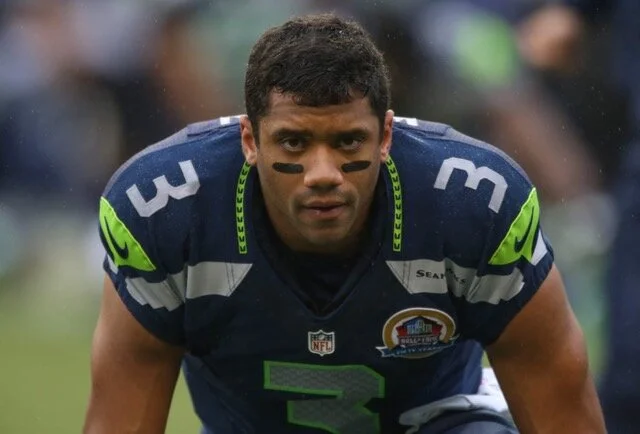Professional football is notoriously hard on the body. Players suffer from frequent injuries, and the average age of retirement is 35 (1). But Seattle Seahawks quarterback Russell Wilson has other plans. Wilson is the second highest passer in NFL history, and in 2015 became the then-second highest paid player in the league (2).
In interviews, Wilson has spoken openly and frequently about his strict diet, fitness, and wellness routines. As Wilson told The News Tribune, an essential part of his recovery is hyperbaric oxygen therapy (HBOT) (3). Each week, he does three HBOT sessions of up to three hours each (3). He partly credits his HBOT treatments with his eight-year-long perfect attendance record for practices and games. Wilson has declared that, with the help of his hyperbaric chamber, he intends to play football until age 45 (2).
So what’s all the fuss about HBOT, and what is it exactly? It involves breathing 100% infused oxygen inside a pressurized chamber. This enables oxygen to reach every part of the body, where it both repairs damaged cells and encourages new cellular growth (4). At the same time, HBOT promotes circulation and stem cell growth, which reduces inflammation, and supports the immune system (4). For decades, HBOT has proven effective for treating a multitude of medical conditions, including diabetic ulcers, bone infections, and radiation injury (5).
So how does HBOT help a professional football quarterback anyway, and could it help you, too? NFL players are prone to injury: in the 2019 season alone, players obtained 224 concussions, 47 ACL tears, and 109 MCL tears (6). Multiple studies have found HBOT to be a highly effective concussion treatment. According to a 2018 study published in “Experimental and Therapeutic Medicine”, post-concussive syndrome patients treated with HBOT “demonstrated an improvement in health-related QOL outcomes, including physical functioning, bodily pain, social functioning and emotionality” (7). A 2011 study published in “Therapeutic Advances in Musculoskeletal Disease” found promising benefits of using HBOT to treat sports injuries, including vasoconstriction, enhanced oxygenation, edema reduction, and a systemic anti-inflammatory effect (8).
At Holistic Hyperbarics, we have successfully treated multiple professional sports players. We strive to help athletes of all levels heal faster, get stronger, and live better. If you’re recovering from a sports injury or surgery, HBOT is a great way to heal faster, get healthy, and stay healthy. We’re ready to serve you at Holistic Hyperbarics. Our state-of-the art spa features knowledgeable staff, a relaxing environment, and comfortable hyperbaric chambers. We’d love to answer your questions about HBOT treatment for sports injuries. Give us a call to book your first HBOT treatment.
SOURCES:
1. Staff, PFA. “Age.” Professional Players Federation, PFA Charity, 2020, www.thepfa.com/equalities/commitment-to-all/age.
2. Paltrow, Chloe. “Russell Wilson Plans to Play till 45 by Using a Personal Hyperbaric Chamber.” Lera Blog, Lera Blog, 10 Nov. 2018, lerablog.org/general/russell-wilson-plans-to-play-till-45-by-using-a-personal-hyperbaric-chamber/.
3. Bell, Gregg. “Russell Wilson's Swims, Hyperbaric Chamber Part of Seahawks' Rushed Recovery to Play Rams.” Tacoma News Tribune, Tacoma News Tribune, 1 Oct. 2019, www.thenewstribune.com/sports/nfl/seattle-seahawks/article235692327.html.
4. Staff, IHAUSA. “Anti Aging.” International Hyperbarics Association, International Hyperbarics Association, 2020, www.ihausa.org/anti-aging.html.
5. Staff, Mayo Clinic. “Hyperbaric Oxygen Therapy.” Mayo Clinic, Mayo Foundation for Medical Education and Research, 12 Jan. 2018, www.mayoclinic.org/tests-procedures/hyperbaric-oxygen-therapy/about/pac-20394380
6. Staff, NFL. “Injury Data.” NFL Play Smart, Play Safe, NFL Player Health & Safety, 2020, www.playsmartplaysafe.com/newsroom/reports/injury-data/.
7. Dong, Yan, et al. “Effect of Hyperbaric Oxygenation Therapy on Post-Concussion Syndrome.” National Institutes of Health, Experimental & Therapeutic Medicine Spandidos Publications, Sept. 2018, www.ncbi.nlm.nih.gov/pmc/articles/PMC6122203/.
8. Barata, Pedro, et al. “Hyperbaric Oxygen Effects on Sports Injuries.” National Institutes of Health, Therapeutic Advances in Musculoskeletal Disease, Apr. 2011, www.ncbi.nlm.nih.gov/pmc/articles/PMC3382683/.

